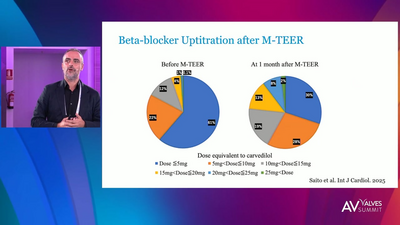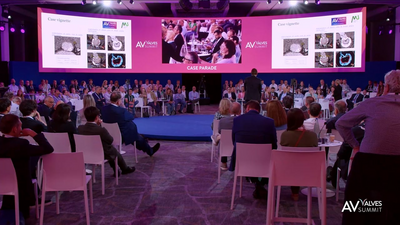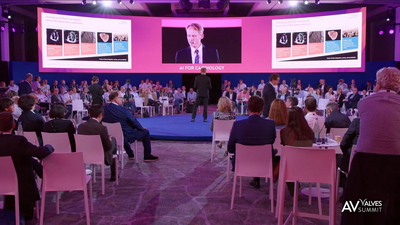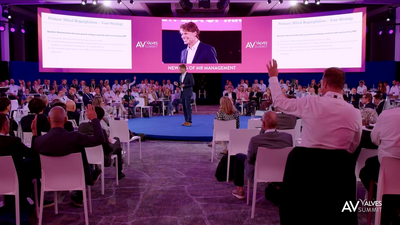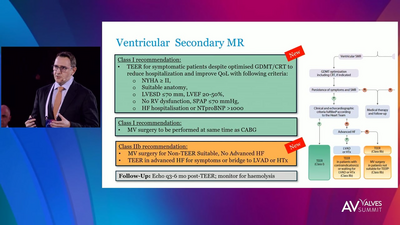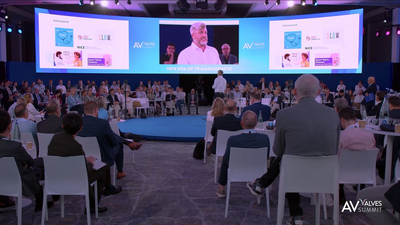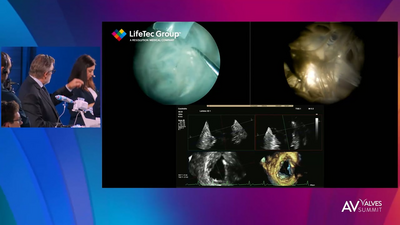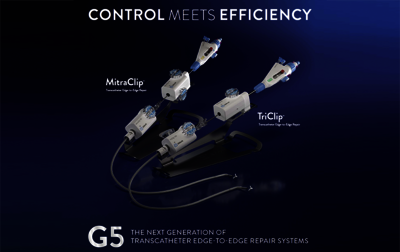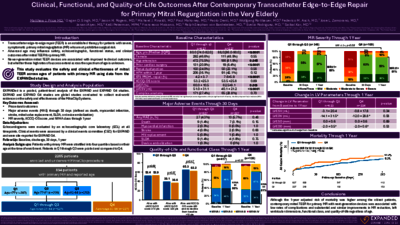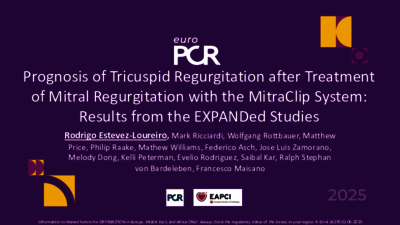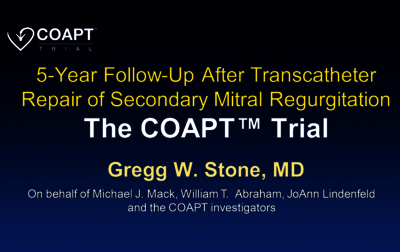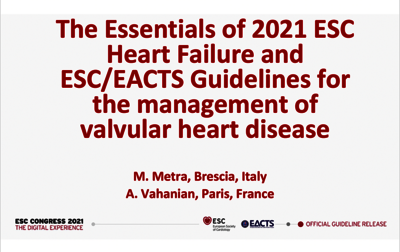Mitralklappeninsuffizienz (MI) macht die überwiegende Mehrheit aller Mitralklappenerkrankungen aus.1 Sie hat eine Prävalenz von etwa 2 % in der Allgemeinbevölkerung und tritt häufiger bei älteren Menschen auf.3 Etwa 10 % der Menschen über 70 sind von einer klinisch bedeutsamen MI betroffen.5
Unbehandelt kann MI zu Herzinsuffizienz (HI) oder einer Verschlechterung einer bereits bestehenden Herzinsuffizienz führen, was zu einer erhöhten Zahl von Hospitalisierungen und einer erheblichen Kostenbelastung für die Gesundheitssysteme führt.6,8
ECHOKARDIOGRAPHIE ist die Grundlage für die Diagnose der Herzklappenerkrankung, einschließlich MI.16
KARDIALE MAGNETRESONANZ ist ein wertvolles Diagnoseinstrument, insbesondere bei Patienten mit eingeschränkter Echoqualität, bei Patienten, deren MI-Schweregrad unklar ist, oder bei Patienten, die eine Beurteilung der myokardialen Verankerung der Atrioventrikularklappen benötigen.20
COMPUTERTOMOGRAPHIE (CT) liefert ein detailliertes Bild der Klappenanatomie, insbesondere der systolischen und diastolischen Ventrikelgeometrie. Diese Informationen können für die Planung eines kathetergestützten Eingriffs wertvoll sein.20
Der diagnostische Weg der MI hat sich in den letzten Jahren geändert, um den neuen Behandlungsmöglichkeiten im Hinblick auf Transkathetereingriffe gerecht zu werden. Neben der Bewertung klinischer Symptome wie Übelkeit und Müdigkeit ist die Auskultation des Herzens der Schlüssel zur Diagnose der MI, und eine detaillierte präoperative Charakterisierung der Mitralklappe ist der Schlüssel zum Erfolg des Eingriffs.20
- Lung B, Baron G, Butchart EG, et al. A prospective survey of patients with valvular heart disease in Europe: The Euro Heart Survey on Valvular Heart Disease. Eur Heart J.
2003;24(13):1231–43. doi.org/10.1016/S0195-668X(03)00201-X. - De Bonis M, Al-Attar N, Antunes M, et al. Surgical and interventional management of mitral valve regurgitation: a position statement from the European Society of Cardiology
Working Groups on Cardiovascular Surgery and Valvular Heart Disease. Eur Heart J. 2016;37(2):133–9. doi.org/10.1093/eurheartj/ehv322. - Cahill TJ, Prothero A, Wilson J, et al. Community prevalence, mechanisms and outcome of mitral or tricuspid regurgitation. Heart. 2021;107(12):1003–9.
dx.doi.org/10.1136/heartjnl-2020-318482. - Barnett K, Mercer SW, Norbury M, et al. Epidemiology of multimorbidity and implications for health care, research, and medical education: a cross-sectional study. The Lancet.
2012;380(9836):37–43. doi.org/10.1016/S0140-6736(12)60240-2. - Singh JP, Evans JC, Levy D, et al. Prevalence and clinical determinants of mitral, tricuspid, and aortic regurgitation (the Framingham Heart Study). Am J Cardiol.
1999;83(6):897–902. doi.org/10.1016/S0002-9149(98)01064-9. - Alegria-Barrero E, Chan PH, Paulo M, et al. Edge-to-edge percutaneous repair of severe mitral regurgitation–state-of-the-art for Mitraclip™ implantation. Circ J.
2012;76(4):801–8. doi.org/10.1253/circj.CJ-11-1462. - Healthcare Commission. Pushing the boundaries. Improving services for people with heart failure. 2007. Available at: webarchive.nationalarchives.gov.uk/ukgwa/20081006104707/
www.cqc.org.uk/_db/_documents/Pushing_the_boundaries_Improving_services_for_patients_with_heart_failure_200707020413.pdf (last accessed: 23 March 2023). - Braunschweig F, Cowie MR, Auricchio A. What are the costs of heart failure? Europace. 2011;13 Suppl 2:ii13–7. doi.org/10.1093/europace/eur081.
- Pedrazzini GB, Faletra F, Vassalli G, et al. Mitral regurgitation. Swiss medical weekly. 2010;140(3–4):36–43. doi.org/10.4414/smw.2010.12893.
- Mayo Clinic. Mitral valve regurgitation. 2019. Available at: www.mayoclinic.org/diseases-conditions/mitral-valve-regurgitation/symptoms-causes/syc-20350178
(last accessed: March 2023). - Sparano DM, Ward RP. Management of asymptomatic, severe mitral regurgitation. Current treatment options in cardiovascular medicine. 2012;14(6):575-83.
- Cioffi G, Tarantini L, De Feo S, et al. Functional mitral regurgitation predicts 1-year mortality in elderly patients with systolic chronic heart failure. Euro J Heart Fail.
2005;7(7):1112–7. doi.org/10.1016/j.ejheart.2005.01.016. - Enriquez-Sarano M, Avierinos J-F, Messika-Zeitoun D, et al. Quantitative determinants of the outcome of asymptomatic mitral regurgitation. N Engl J Med.
2005;352(9):875–83. doi.org/10.1056/NEJMoa041451. - Grigioni F, Tribouilloy C, Avierinos J-F, et al. Outcomes in mitral regurgitation due to flail leaflets a multicenter European study. JACC Cardiovascular Imaging.
2008;1(2):133–41. doi.org/10.1016/j.jcmg.2007.12.005. - McDonagh TA, Metra M, Adamo M, et al. 2021 ESC Guidelines for the diagnosis and treatment of acute and chronic heart failure: Developed by the Task Force for the
diagnosis and treatment of acute and chronic heart failure of the European Society of Cardiology (ESC) With the special contribution of the Heart Failure Association (HFA)
of the ESC. Eur Heart J. 2021;42(36):3599–3726. doi.org/10.1093/eurheartj/ehab368. - Vahanian A, Beyersdorf F, Praz F, et al. 2021 ESC/EACTS Guidelines for the management of valvular heart disease: Developed by the Task Force for the management of
valvular heart disease of the European Society of Cardiology (ESC) and the European Association for Cardio-Thoracic Surgery (EACTS). Euro Heart J. 2022;43(7):561–632.
doi.org/10.1093/eurheartj/ehab395. - Gaasch WH, Meyer TE. Left ventricular response to mitral regurgitation: implications for management. Circulation. 2008;118(22):2298–2303.
doi.org/10.1161/CIRCULATIONAHA.107.755942. - National Health Service. Mitral valve problems. 2020. Available at: www.nhs.uk/conditions/mitral-valve-problems(last accessed: March 2023).
- American Heart Association. Problem: Mitral Valve Regurgitation. 2016. Available at: www.heart.org/en/health-topics/heart-valve-problems-and-disease/heart-valveproblems-and-causes/problem-mitral-valve-regurgitation (last accessed: March 2023).
- Spieker M, Kelm M, Westenfeld R. Moderne Diagnostik der Mitral- und Trikuspidalklappe – was ist wirklich notwendig? Aktuelle Kardiologie. 2017;6:265–70.
doi.org/10.1055/s-0043-115534. - Young A, Feldman T. Percutaneous mitral valve repair. Curr Cardiol Rep. 2014;16(1):443. doi.org/10.1007/s11886-013-0443-6.
- Otto CM, Nishimura RA, Bonow RO, 3 authors, et al.. 2020 ACC/AHA Guideline for the Management of Patients With Valvular Heart Disease: Executive Summary:
A Report of the American College of Cardiology/American Heart Association Joint Committee on Clinical Practice Guidelines. Circulation. 2021;143(5):e35–e71.
doi.org/10.1161/CIR.0000000000000932. - Ling LH, Enriquez-Sarano M, Seward JB, et al. Clinical outcome of mitral regurgitation due to flail leaflet. N Engl J Med. 1996;335(19):1417-1423.
doi.org/10.1056/NEJM199611073351902. - Mirabel M, Iung B, Baron G, et al. What are the characteristics of patients with severe, symptomatic, mitral regurgitation who are denied surgery? Eur Heart J.
2007;28(11):1358–65. doi.org/10.1093/eurheartj/ehm001. - Nielsen SL. Current status of transcatheter mitral valve repair therapies - From surgical concepts towards future directions. Scand Cardiovasc J. 2016;50(5-6):367-376. doi.org/10.1080/14017431.2016.1248482
- Asgar AW, Mack MJ, Stone GW. Secondary mitral regurgitation in heart failure: pathophysiology, prognosis, and therapeutic considerations. J Am Coll Cardiol. 2015;65(12):1231–1248. doi.org/10.1016/j.jacc.2015.02.009
- Iung B, Baron G, Tornos P, et al. Valvular heart disease in the community: a European experience. Curr Probl Cardiol. 2007;32(11):609-661. doi.org/10.1016/j.cpcardiol.2007.07.002
- Heidenreich PA, Bozkurt B, Aguilar D, et al. 2022 AHA/ACC/HFSA Guideline for the Management of Heart Failure: A Report of the American College of Cardiology/American Heart Association Joint Committee on Clinical Practice Guidelines. Circulation. 2022;145(18):e895–e1032. doi.org/10.1161/CIR.0000000000001063
- Coats AJS, Anker SD, Baumbach A, Alfieri O, von Bardeleben RS, Bauersachs J, et al. The management of secondary mitral regurgitation in patients with heart failure: a joint position statement from the Heart Failure Association (HFA), European Association of Cardiovascular Imaging (EACVI), European Heart Rhythm Association (EHRA), and European Association of Percutaneous Cardiovascular Interventions (EAPCI) of the ESC. Euro Heart J. 2021;42(13):1254–1269. doi.org/10.1093/eurheartj/ehab086








